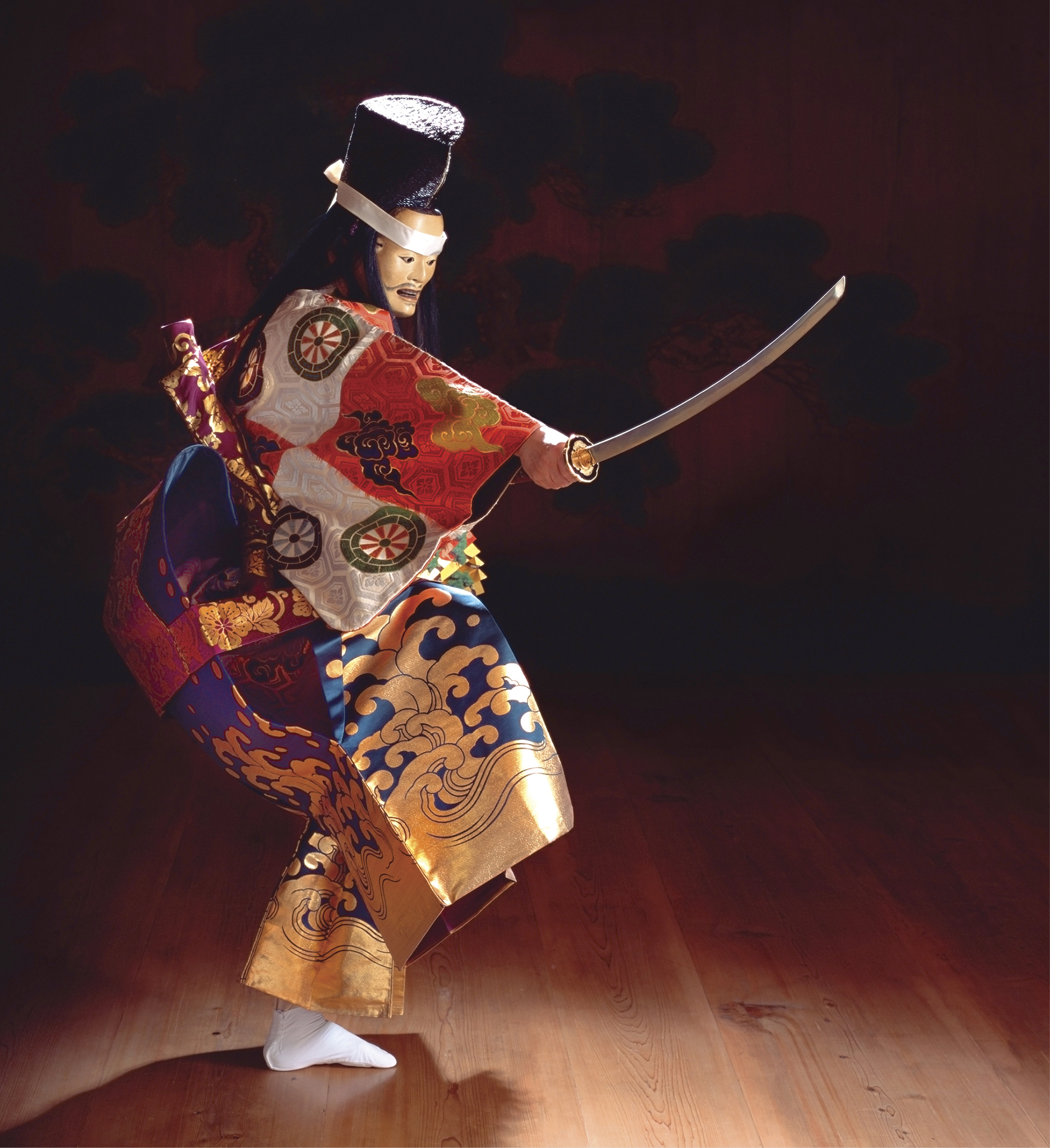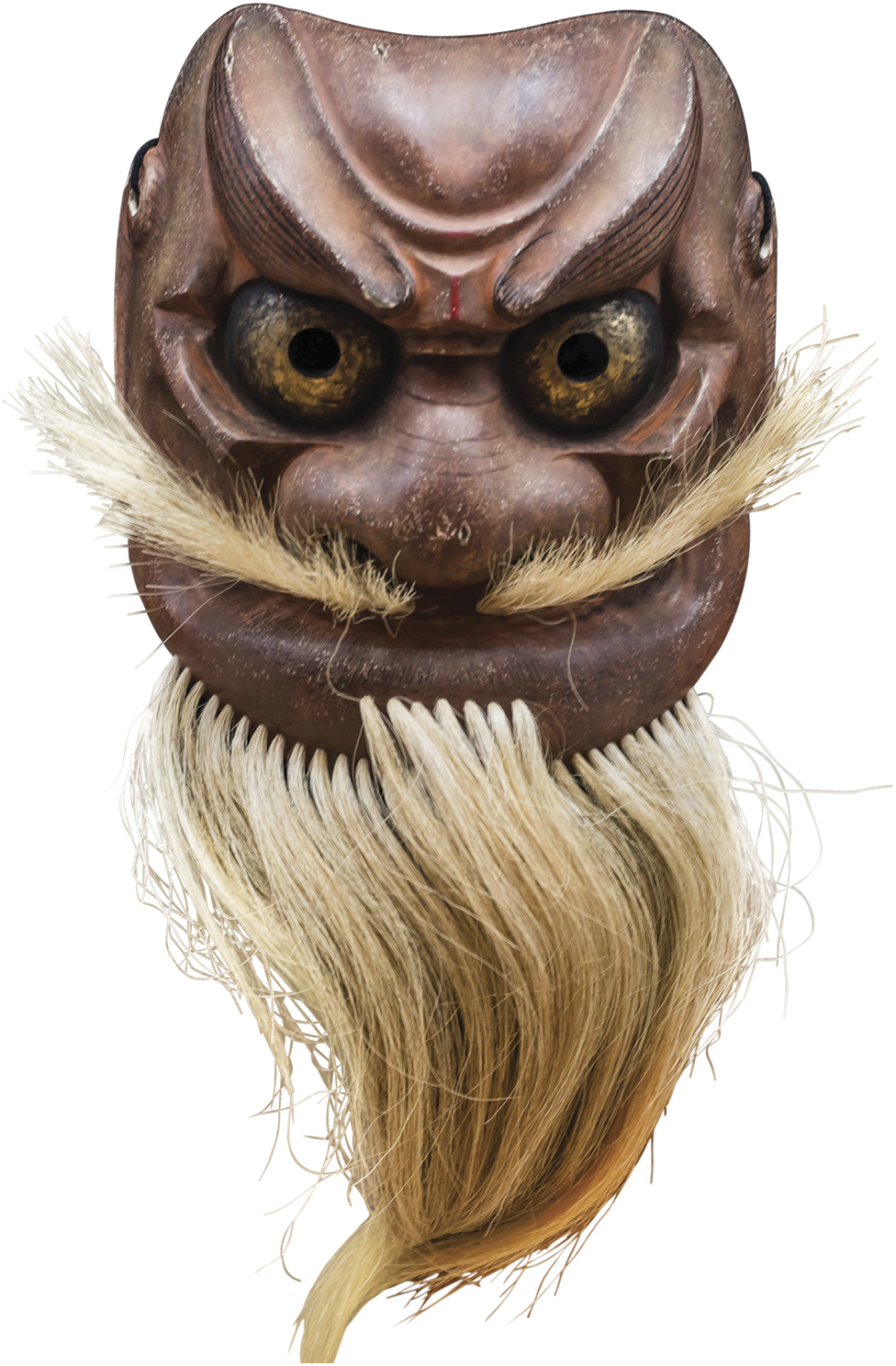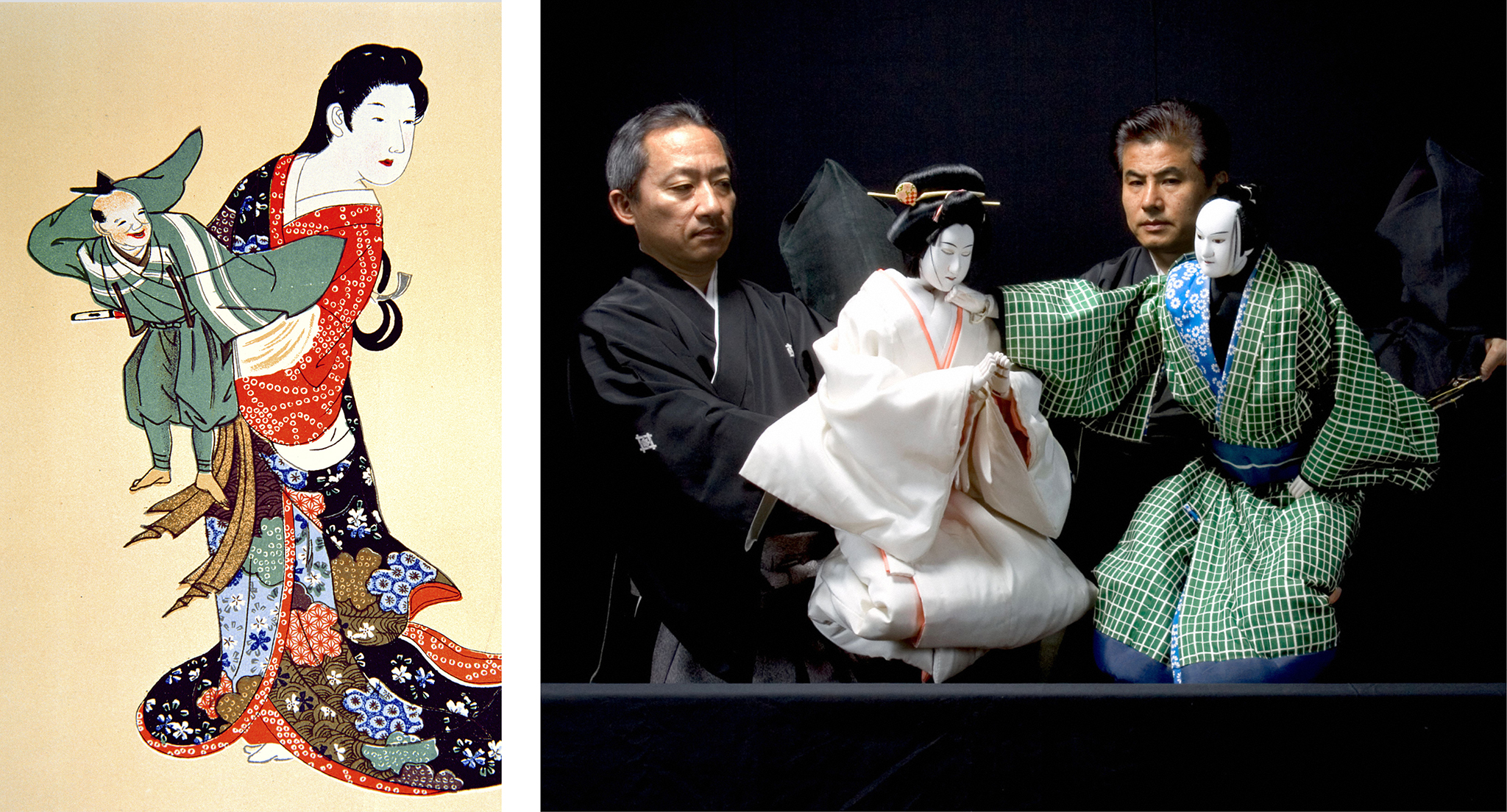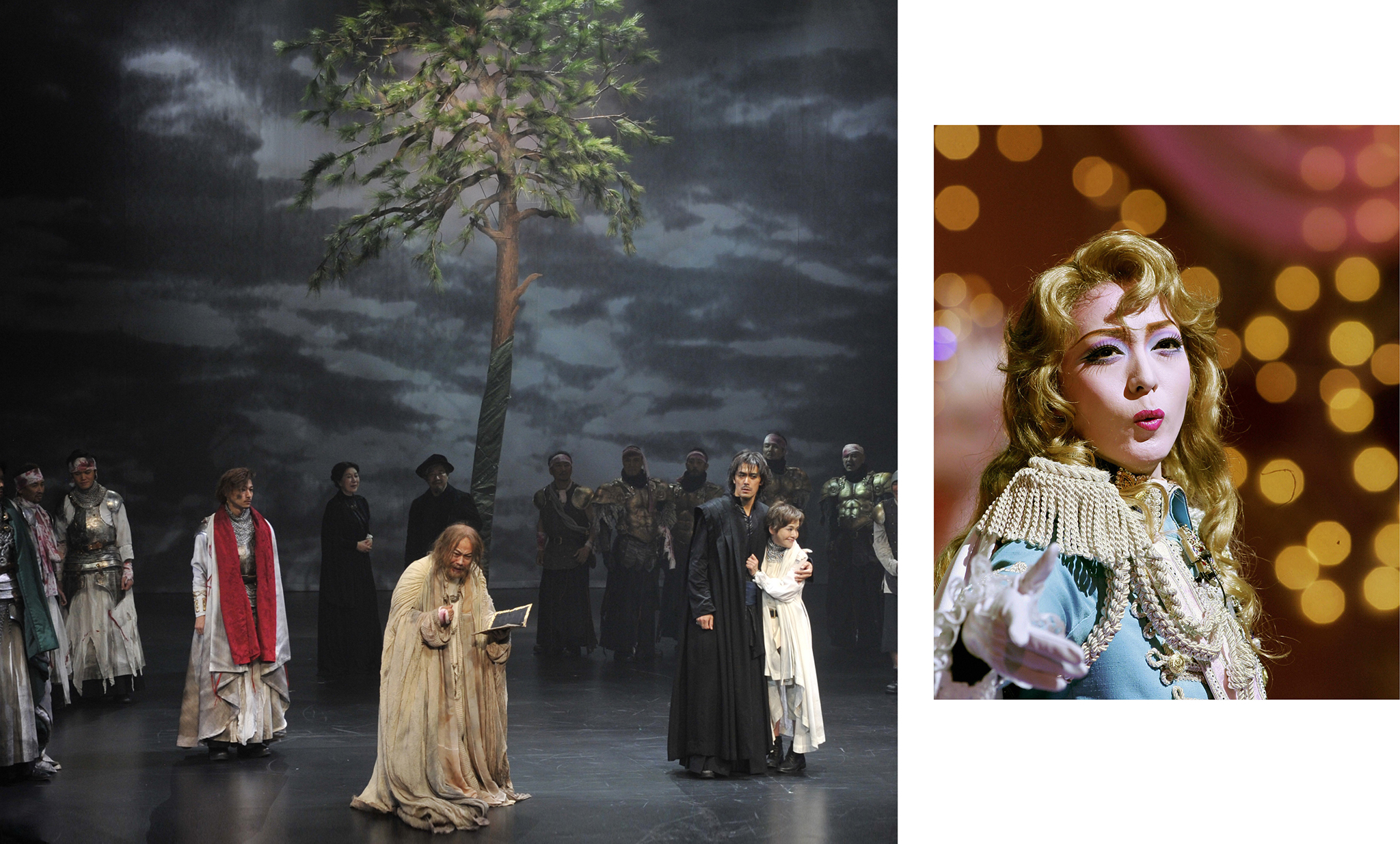日本の舞台
Japanese Theatre
A balance of tradition and avant-garde
Japan’s plays and musicals may seem difficult to appreciate for non-Japanese speakers, but the language barrier shouldn’t put you off. The exaggerated visuals and exciting atmosphere of traditional theatre are still an unmissable experience, and contemporary adaptations of Western plays are a fascinating twist on old favorites.
Be More Japan Japanese Theatre

D During a no performance, only one or two masked characters appear on the bare stage at a time.
Be More Japan Japanese Theatre
family business
The traditions of no theatre were established by father-and-son team Kan’ami and Zeami.
The Theatre of No

D NO Mask
Japanese theatre has its roots in sacred Shinto dances, which were performed on a bare wooden stage with a painted backdrop of a pine tree and a canopy of a shrinelike roof. No (or noh) plays were developed in the 14th century and are defined by their mythical subject matter, slow-moving choreography, and masked performers. Musicians playing drums and flutes sit at the rear of the stage, across which leading performers move with studied grace and deliberation, wearing extravagant silk costumes and carved wood and painted masks.
The plays and kyOgen
The 240 or so no plays that make up the current repertoire are performed at public theatres in Tokyo, Nagoya, and Osaka, as well as the theatres of famous no schools such as Kanze in Tokyo. The plays are divided into five general genres, and at a typical performance, which can last several hours, you’ll get to see a selection from each. They’re interspersed with comic interludes called kyogen—amusing monologues designed to provide some light relief and counterpoint to the serious no dramas. Performers of both styles are male, but kyogen actors don’t wear masks and use far less formal speech.
Kabuki
Kabuki is the most flamboyant of classical Japanese performing arts, and seeing a performance is an unforgettable experience. Famous for being performed by an all-male cast, kabuki is believed to have been created in the 17th century by Izumo-no-Okuni. Her unique style of performing sacred songs and dances inspired the creation of several all-female troupes. Women performers were banned in 1629 for being too erotic, but kabuki’s popular support ensured its survival. Cross-dressing male actors, called onnagata, took up the female roles, and the emphasis moved from song and dance to drama.
Bunraku
Japanese puppet dramas began in the 17th century in Osaka, which remains the home of the National Bunraku Theatre. The performing art developed out of the storytelling tradition of minstrels reciting popular tales of famous heroes and legends, accompanied by musicians playing traditional instruments like the biwa and shamisen.
The large puppets used for bunraku are incredibly lifelike, about one-third to half the size of a human. They take three people to operate: the main puppeteer who manipulates the face, head, and right arm; and assistants for the left arm and legs. All are dressed in black and are in full view of the audience. Thanks to their skill in working the puppets—a process that takes years to learn—they usually fade into the background as the audience focuses on the realistically moving figures and the emotions conjured by the narrator and the musicians.
Be More Japan Japanese Theatre

D Left to right: Bunraku puppeteers are known as Ningyotsukai or Ningyozukai; the puppeteers must carefully coordinate their movements.
cross-influence
Many kabuki plays were originally written for puppets; bunraku has in turn borrowed from a number of kabuki dramas.
Experience Bunraku
To enjoy a bunraku performance, there’s no better venue than the National Bunraku Theatre in Osaka, which provides audio guides in English as well as translated programs. There are only a few shows every year, so keep your eyes open for performance information. A good introduction to bunraku is through special performances for beginners. These combine a demonstration of the art of bunraku along with actual plays, and are conducted in multiple languages—perfect for foreign theatre lovers.
Interpreting the Western Stories
Some modern playwrights and performers in Japan have turned to Western theatre for inspiration, adapting existing stories with a twist in the storytelling or the performance style. The director Yukio Ninagawa (1935–2016) was a leading figure in this branch of the modern Japanese theatre scene, best known for his localized interpretations of Greek tragedies and Shakespeare. His version of Macbeth featured Buddhist chanting and witches in kabuki costumes.
The railway tycoon Ichizu Kobayashi was a lover of Western opera, and founded an all-female group in 1914 called the Takarazuka Review Company. It has flourished to become one of Japan’s most beloved theatrical troupes, and performs Western-style musical dramas and shows based on Western novels such as Gone With the Wind and War and Peace. Millions of fans flock to the troupe’s Tokyo stage to attend the shows, which are performed by one of six troupes—Flower, Moon, Snow, Star, Cosmos, and Senka, the last made up of the company’s most senior members. Each troupe has a star pair of actors—the male impersonator, the otoko yaku, and the musume yaku, the female lead.
Be More Japan Japanese Theatre

D Left: A performance of Shakespeare’s Cymbeline, directed by Yukio Ninagawa. Right: Takarazuka’s production of The Rose of Versailles.
Be More Japan Japanese Theatre
2.5D Musicals
One of the latest trends in Japanese theatre is the creation of shows based on popular manga, anime and video games. A unique fusion of a two-dimensional comic book work and a three-dimensional onstage world, the format is known as a 2.5D musical. Using elaborate sets, costumes, music, and special effects such as freeze frames, the shows vividly bring the source material to life. One of the most popular prod-uctions is The Prince of Tennis, based on the manga series by Takeshi Konomi, about a teen tennis prodigy. There have been more than 20 variants of the show, selling millions of tickets.
